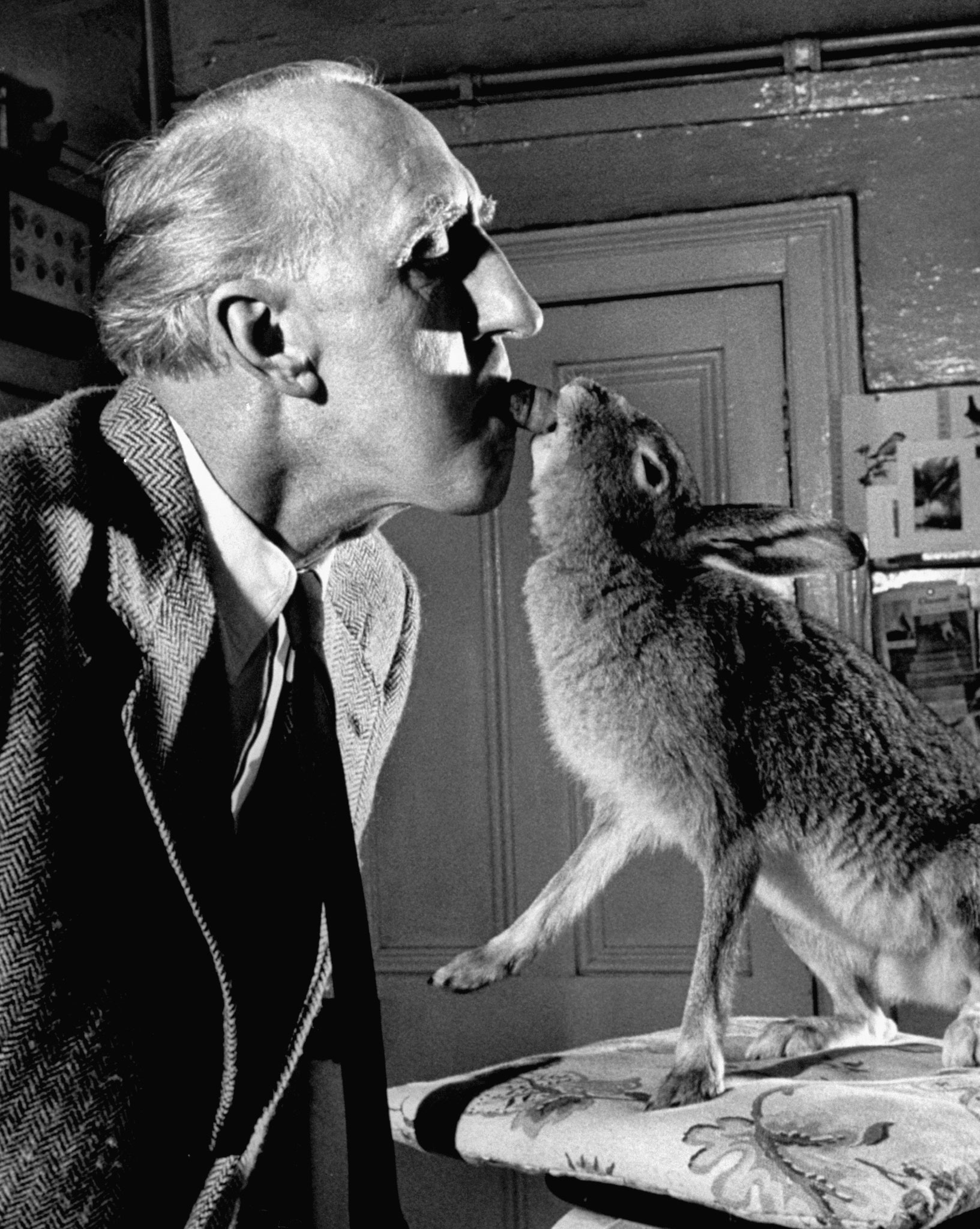
Carl Mydans belongs on anyone’s short list of the 20th century’s finest photojournalists. The Boston native chronicled downtrodden migrant farmers in New England and the American South during the Great Depression, covered the Soviet invasion of Finland in 1939, documented Gen. Douglas MacArthur’s legendary “return” to the Philippines in 1945 and was aboard the USS Missouri when a Japanese delegation signed surrender documents, ending the Second World War.
He photographed Hiroshima survivors, the Korean War, card sharks, William Faulkner, dancing bears, Gertrude Stein, Basque shepherds, royal weddings and the mysterious giant stone moai of Easter Island. He shot for LIFE, first as a freelancer and then as a staff photographer, for virtually the entire time that the magazine published as a weekly, and brought a reporter’s eye and a compassionate heart to every assignment he worked.
In 1956, Mydans also memorably captured the mercurial essence of an utterly compelling figure who, in his own time and in his own way, was as fascinating as any that ever graced the pages of LIFE: Horace the housebroken hare.
The notion of a wild hare (distinguished from a mere rabbit by its longer ears, longer legs and other physical traits) living in one’s house does not sit well with a lot of people. Men and women who are perfectly content to let a cat or dog roam around their homes will shiver in something like revulsion at the idea of a virile, bright-eyed hare hopping blithely through the kitchen, hanging out in the bathroom or sitting quietly on the living room sofa.
Judging by the mood of Mydans’ photographs, however, Horace and his people — the Webbs of Dublin, Ireland — appear to have come to an amicable agreement about how to get along under the same roof. In fact, in most of these pictures, it’s evident that the hare holds sway in the household, and the humans are there, for the most part, simply to do Horace’s bidding.
In its March 12, 1956, issue, LIFE shared the housebroken hare’s tale — and Mydans’ pictures — with the magazine’s readers:
It is the usual fate of the Irish hare, a wild strain betwixt the Scottish and European varieties, to sleep by day in the hedgerows and by night to scurry through plowed fields in search of leafy delicacies. To live long he must be a wary hare, on guard always against man, his guns and dogs.
This might have been the life of Horace, the loveable hare, had he not fallen three years ago into the hands of Cecil S. Webb, director of the Dublin Zoo. Webb and his wife took Horace into their home to study the ways of small wild animals. They kept him on … because they had acquired a wonderful pet, as intelligent, playful and domesticated as any dog.
Horace loves to eat from his master’s mouth, kick and drum against him in mock battle, bound about the house from chair to bed to bureau. And hare, a favorite food all over Europe, has no place on the Webbs’ dining table.
Liz Ronk, who edited this gallery, is the Photo Editor for LIFE.com. Follow her on Twitter at @LizabethRonk.
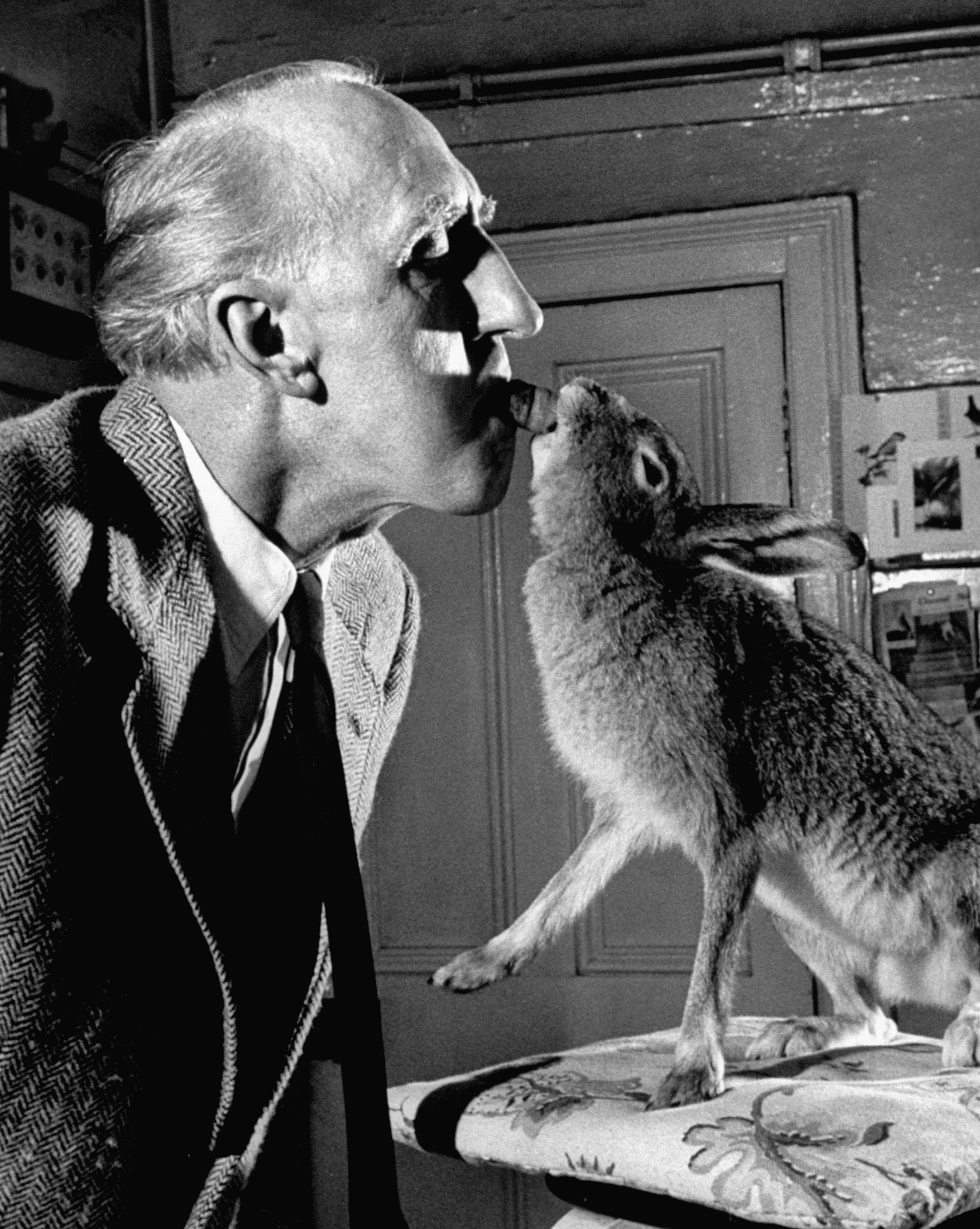

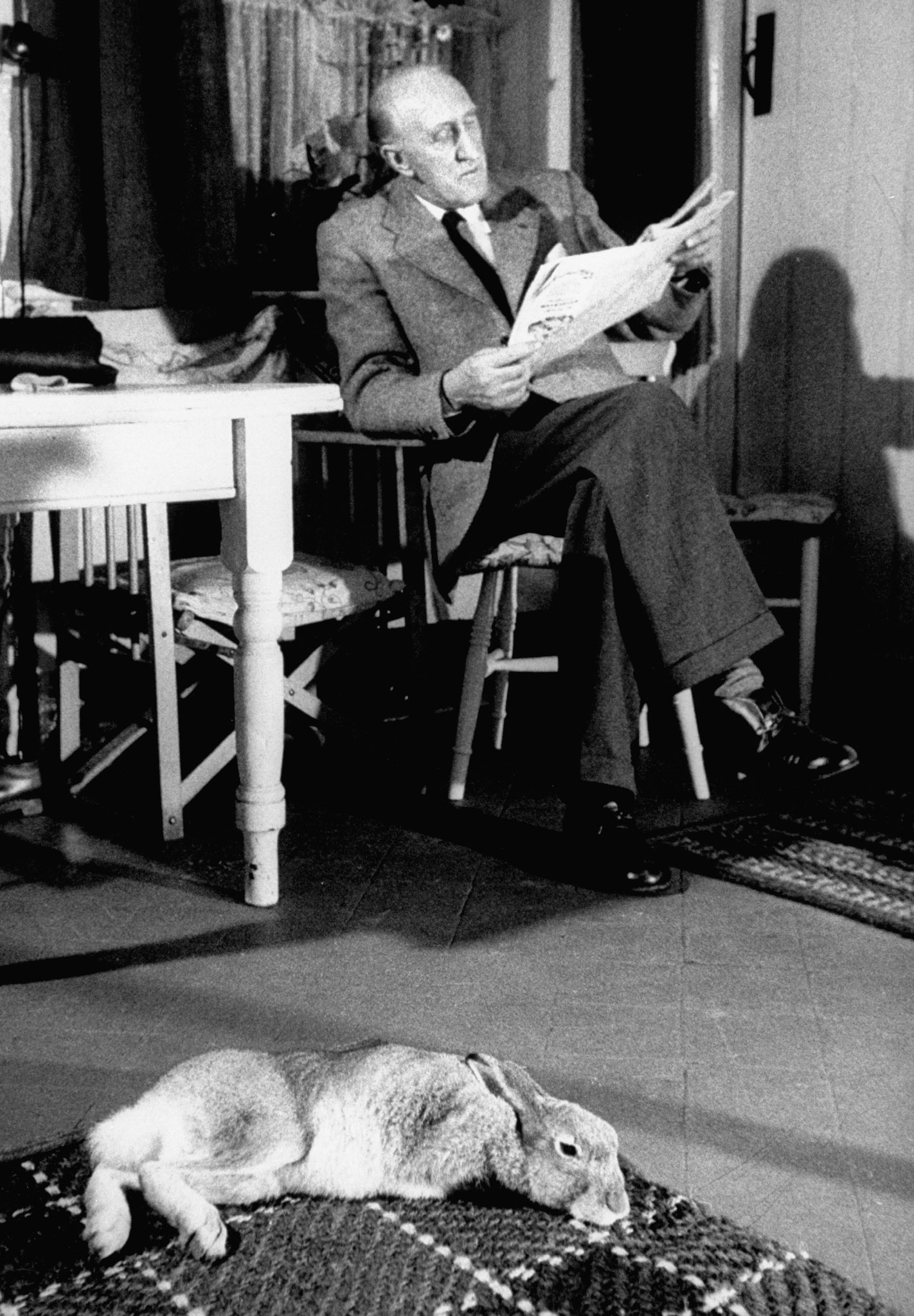

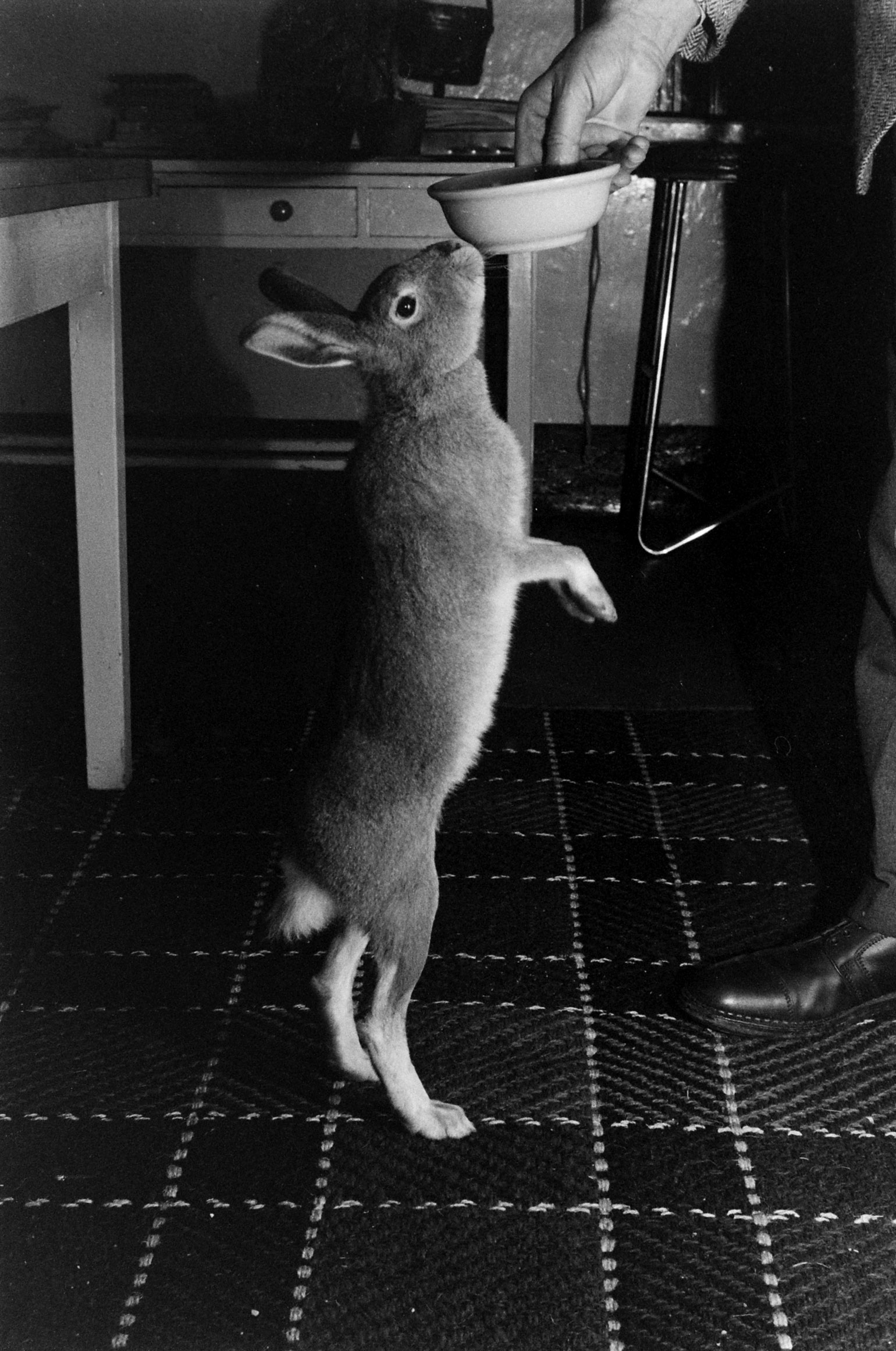
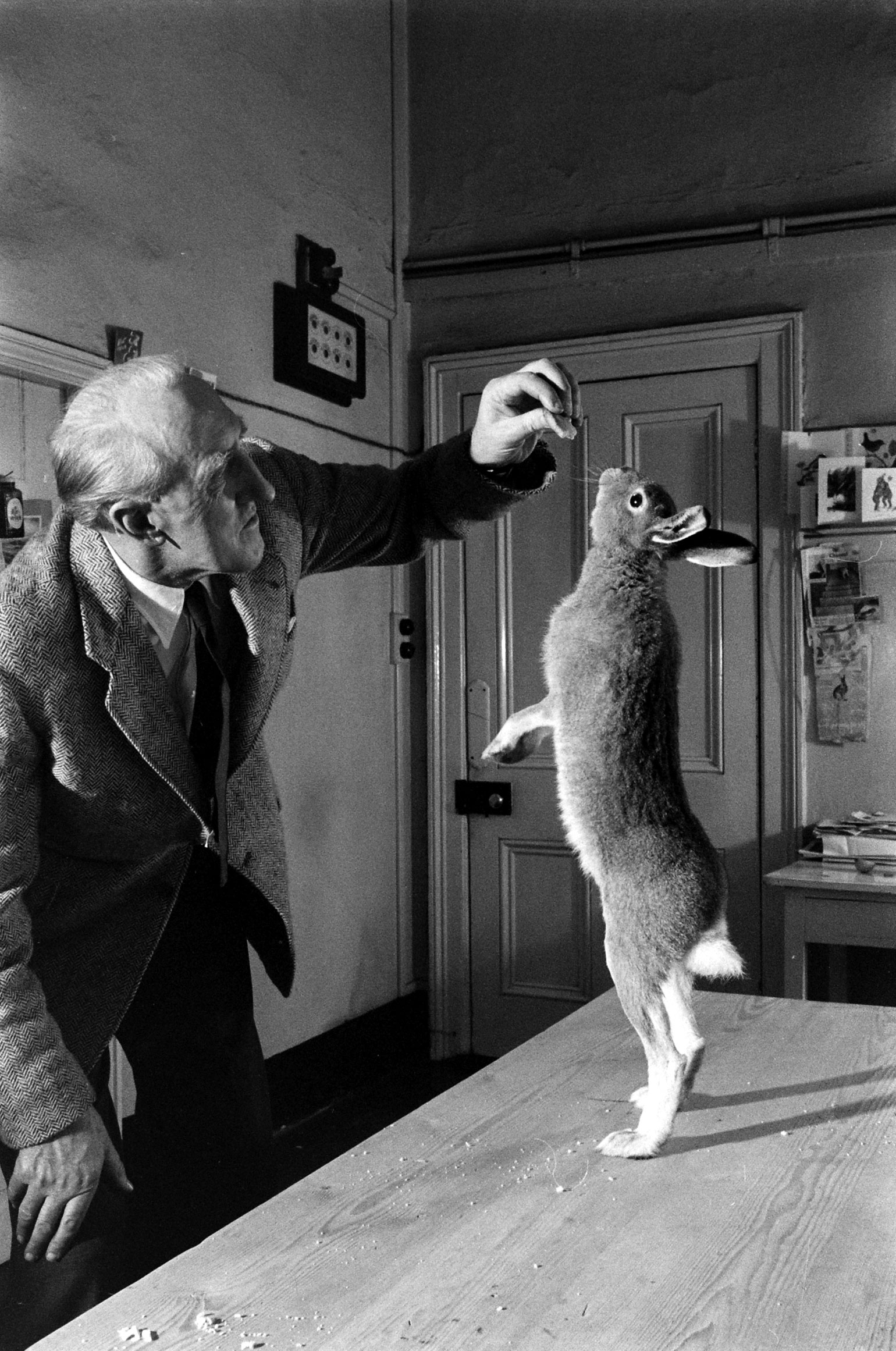


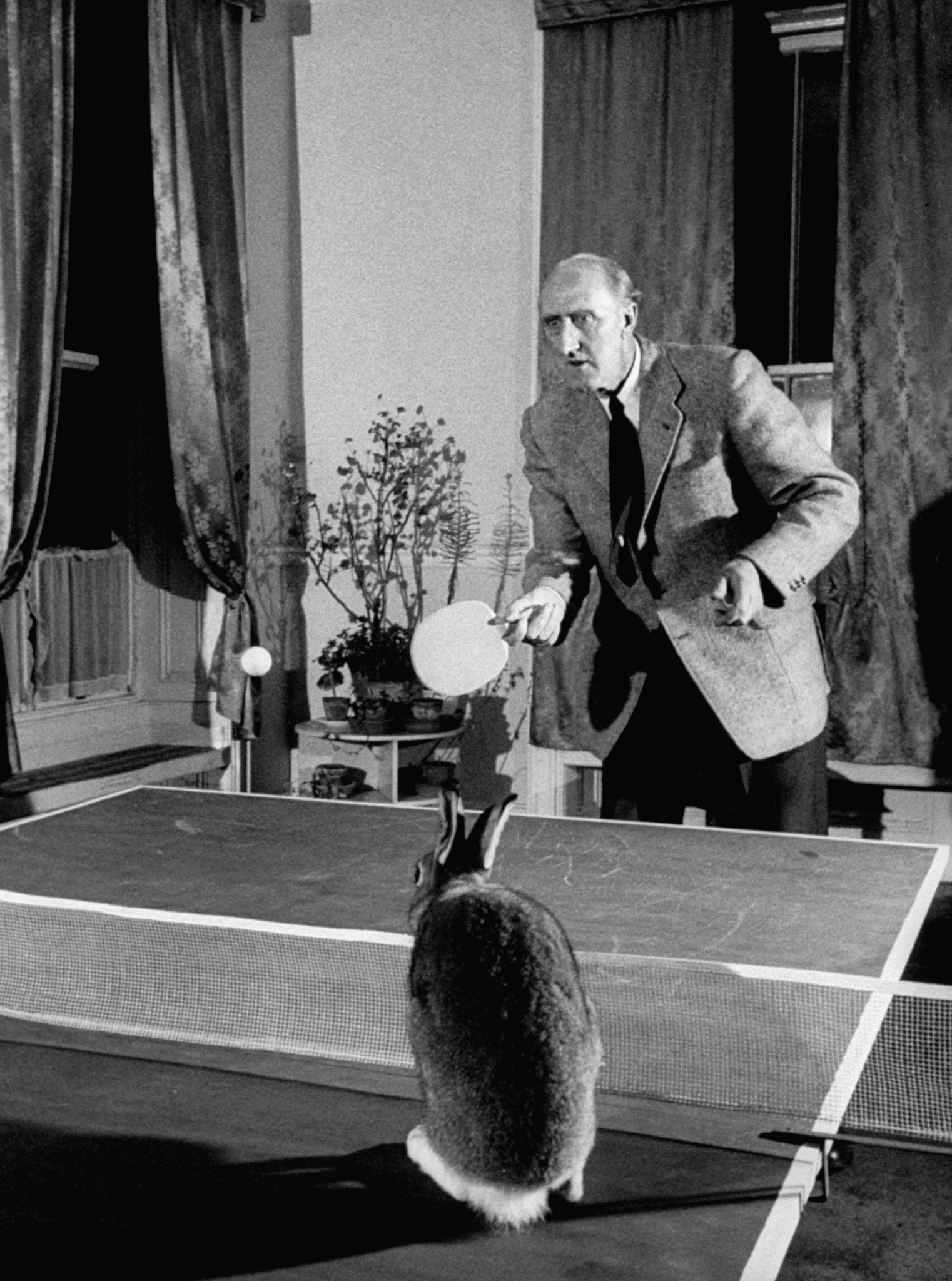
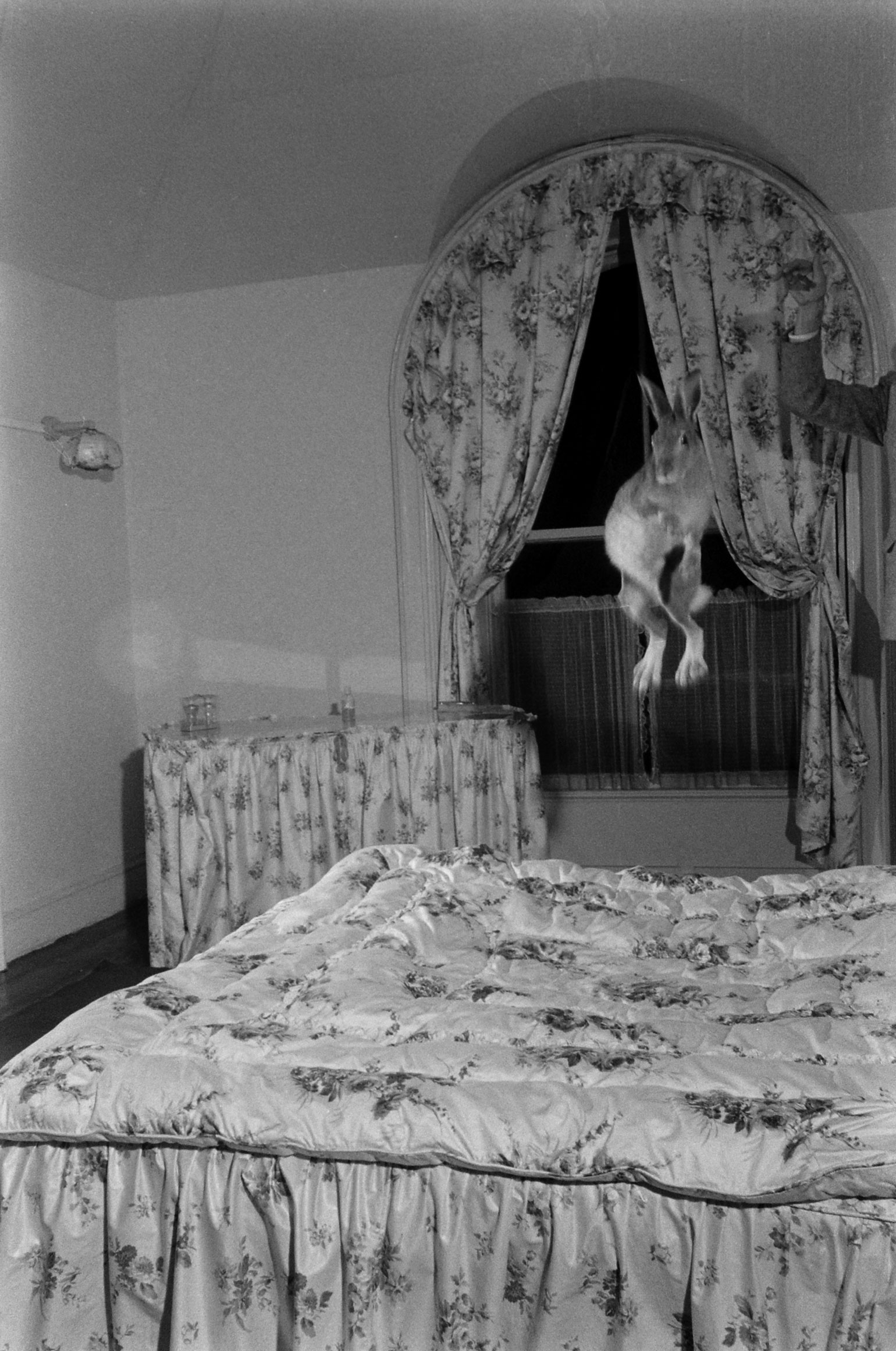
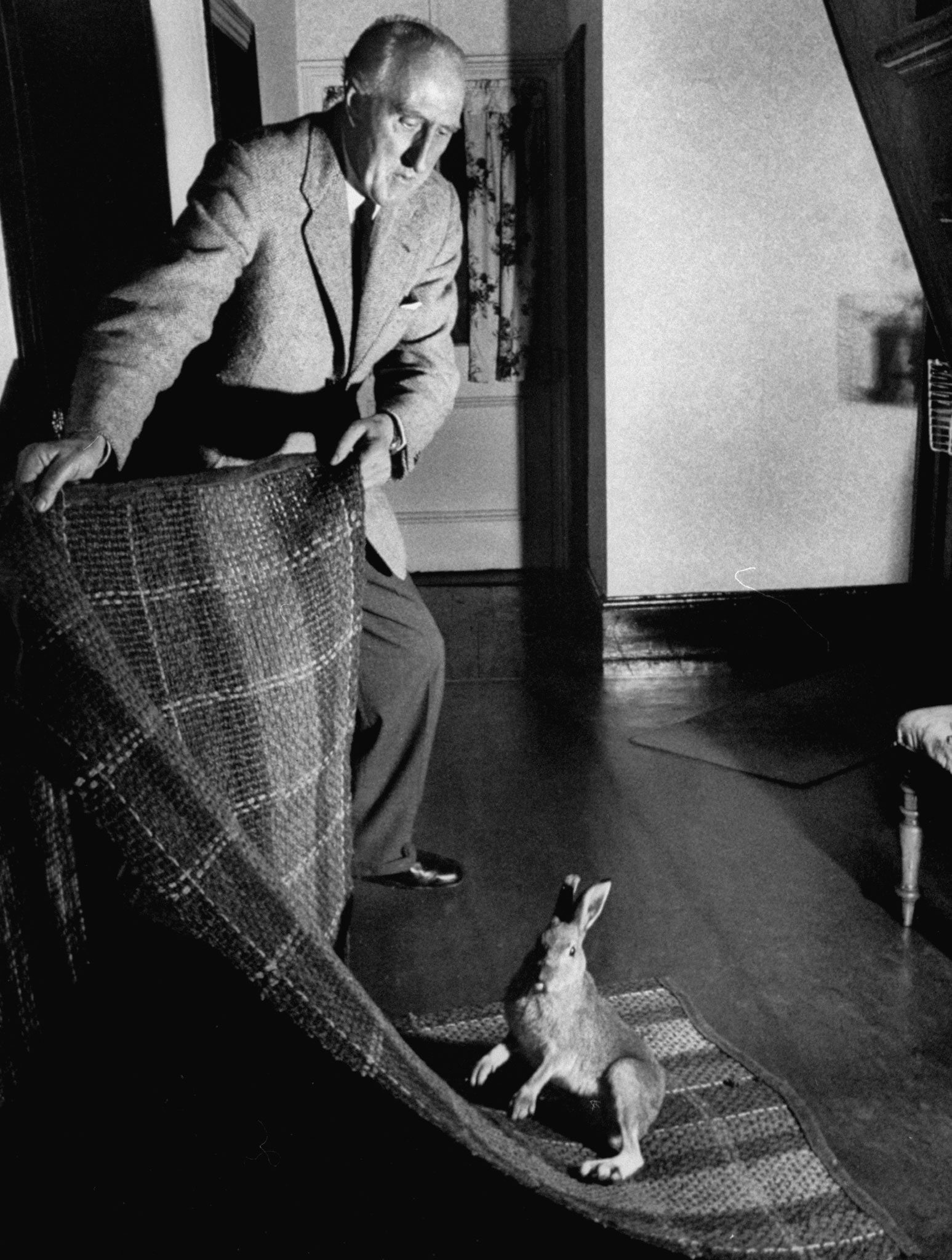




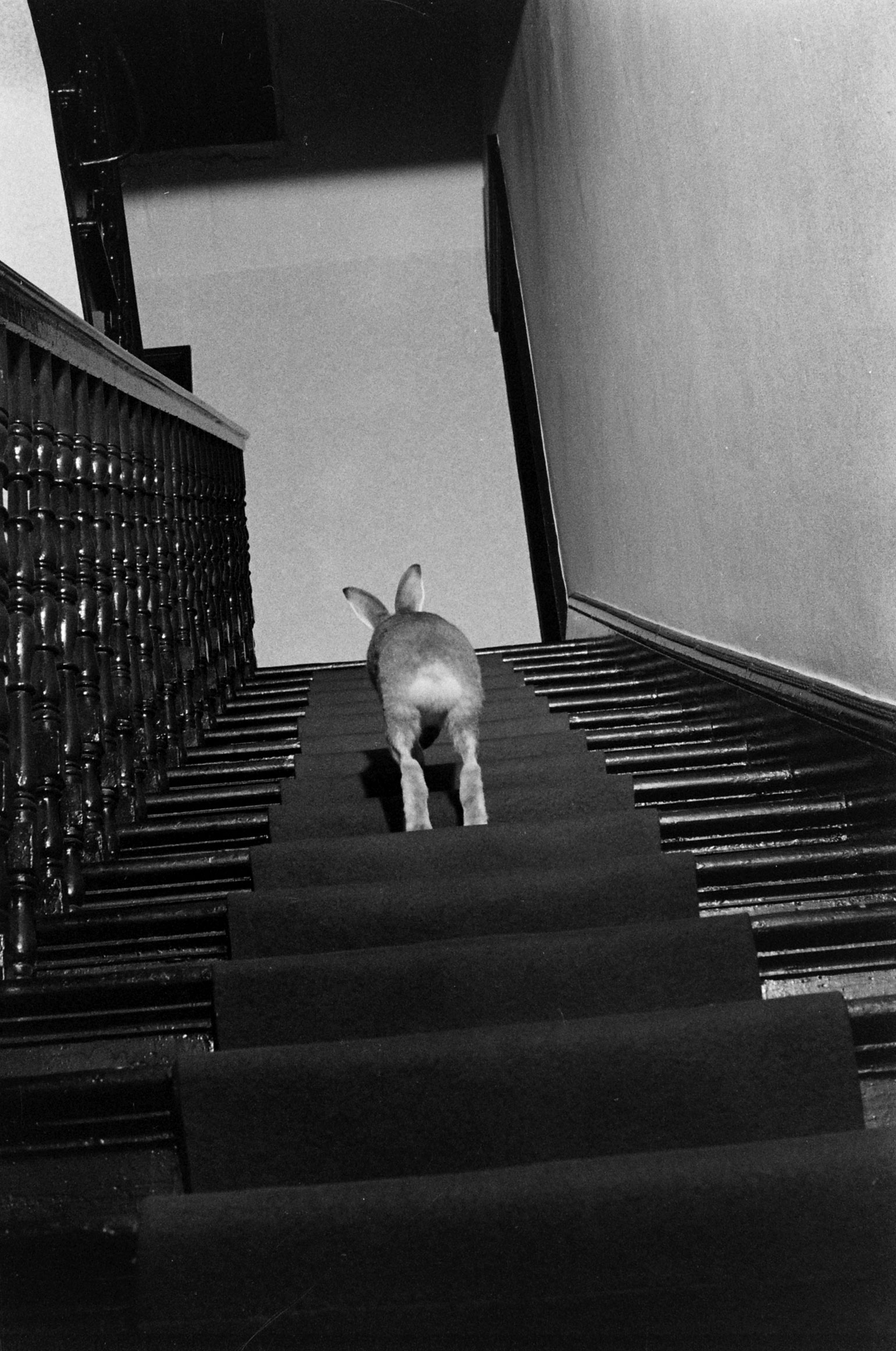
More Must-Reads from TIME
- Donald Trump Is TIME's 2024 Person of the Year
- Why We Chose Trump as Person of the Year
- Is Intermittent Fasting Good or Bad for You?
- The 100 Must-Read Books of 2024
- The 20 Best Christmas TV Episodes
- Column: If Optimism Feels Ridiculous Now, Try Hope
- The Future of Climate Action Is Trade Policy
- Merle Bombardieri Is Helping People Make the Baby Decision
Contact us at letters@time.com